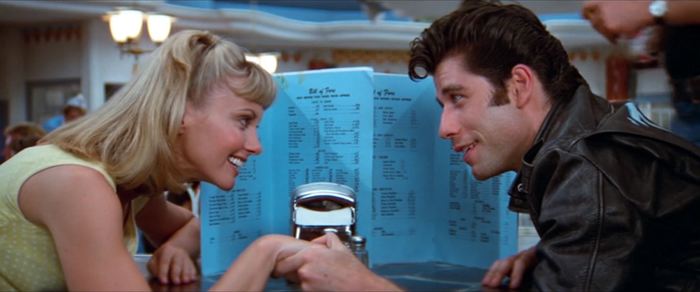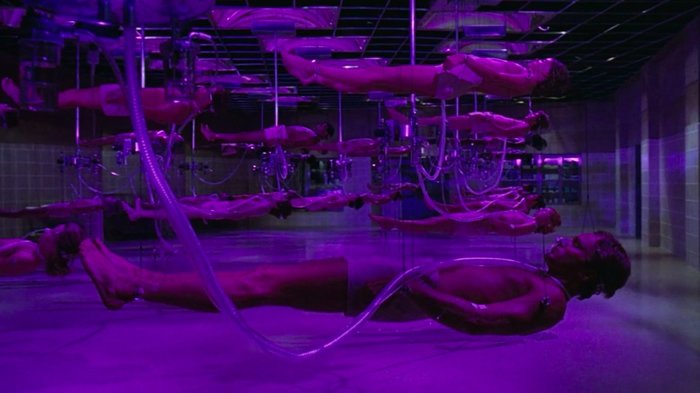For the uninitiated, the 1978 project is a deep dive into a specific year in cinema (guess which year!) Now that we’re past the Six Weeks of Halloween (which was not without movies qualifying for the 1978 Project), I figure it’s time to catch up with some other 1978 movies.
- China 9, Liberty 37 – A gunfighter is saved from the hangman, but only if he agrees to murder a miner who has refused to sell his land to the railroad company. This is the plot to approximately 40% of all western movies, but coming as it does towards the end of the spaghetti western run, the film is more poetic and reflective than usual. Of course, this also makes it slower moving, but it’s clearly far more interested in the characters, which are more fleshed out than you’d expect. Warren Oats plays the miner (and former gunslinger) with a wistful edge and Jenny Agutter does great work as his wife, trapped by circumstance. Fabio Testi certainly looks the part of the young gun, but his accent detracts from an otherwise solid performance. The love triangle that develops between the three isn’t exactly breaking new ground either, but the character work adds some sense of distinction. Director Monte Hellman certainly has a keen eye, taking full advantage of the spaghetti western tropes in composing his landscapes and blocking his scenes. If you can find a decent transfer of the film (i.e. not the one on Amazon prime, which is SD and cropped/pan-and-scan), it looks great, almost painterly at times. Pino Donaggio turns in a solid spaghetti-style score too, full of harmonicas and guitars. Ultimately a well made take on a standard western story, the plot doesn’t quite sustain itself, but its other qualities make it worthy of a watch. **1/2
- Days of Heaven – Terrence Malick’s elegiac dreamscape defies any real plot description. Oh sure, there’s a love triangle, a light critique of labor in the early 20th century, and some grifting schemes, but they’re muted at almost every opportunity. Instead, we get 94 minutes of impeccably photographed landscapes and people. Indeed, most of the film was shot using natural light during the “magic hour”, an insane decision that lead to a production schedule where they only really filmed for, like, 20 minutes a day. Ennio Morricone’s score is also great and fits seamlessly with the film’s dreamlike tone.
The result is gorgeous, of course, but it’s in service of fairly pedestrian musings on love, labor, and life. The film is punctuated by a long running narration, which is quite odd. It’s not sloppy exposition, which is good, but the line readings aren’t particularly inspired either, and it feels like the film is reaching for profundity that isn’t really there. Or maybe it is. The film is filled with so much beauty that it’s hard not to lose yourself in the landscapes and breathtaking nature photography. The locust sequence in the latter portion of the film is particularly effective, and it presents something visually different from the whole. It’s the sort of film that lets you project your own themes on top of the light ones presented, which I suspect is why it has been so well received. I tend to prefer something a little tighter, but if you’re going to eschew substance in favor of style, this is the way to do it. **1/2
- Grease – Australian good girl moves to American and falls in love with a greaser over the summer, but when they unexpectedly wind up attending the same school, worlds will collide, Jerry. Will they overcome peer pressure and their friends’ expectations to keep the romance going? I’m not a big fan of musicals, but I can definitely see why this has such a devoted following.
It seems to have come out at the perfect time, riding the wave of 50s nostalgia that ran through the 70s, as well as star-making turns from John Travolta (already on the rise from Saturday Night Fever, this cemented his ascent) and Olivia Newton John. The story is pure fluff, hinting at some darker themes but downright joyful compared to the era’s trend of more dour takes on traditional stories. It’s cheesy and wholesome at the same time, making it appealing to just about everyone. This sort of thing isn’t really for me, but I can appreciate what’s going on here well enough. ***
- Death Force – A trio American soldiers in Vietnam come up with a side hustle of smuggling cocaine in the coffins of Vietnam soldiers killed in action. Two of the soldiers betray the third, shooting him and throwing him overboard. Only he doesn’t die… he washes up on some remote Pacific island populated by two imperial Japanese soldiers who have been stranded there since the end of WWII and still think it’s their duty to occupy the land (not knowing the war had ended, like, 25 years previous). Anyway, our betrayed hero learns the art of the Samurai from his new Japanese friends, gets rescued, then goes on a rampage with his Samurai sword, taking out every gangster he sees. So yeah, this is a pretty bonkers little exploitation flick. It’s not conventionally good, but it’s quite entertaining if you get on its wavelength. Obviously low budget, the filmmakers go with the flow and present their limitations almost as if they were some sort of aesthetic choice. The result is perhaps more unintentionally funny than poignant, but it’s got a heart in there somewhere. This isn’t going to show up on my top 10 or anything, but it’s a fun little flick and worth checking out if you enjoy trash. **
- Coma – A young doctor uncovers a rash of mysterious events at her hospital. A steady stream of relatively healthy patients are coming in for routine surgery and experiencing inexplicable “complications” that result in comas. She becomes obsessed with investigating and exposing the potential conspiracy. This is a sturdy little mid-tier conspiracy thriller adapted by Michael Crichton from a Robin Cook novel. While the story was not written by Crighton, it touches on many of the themes Crighton clearly loves, and he’s actually a pretty solid director, able to ratchet up the tension in both obvious and non-obvious ways throughout this film. Geneviève Bujold turns in a great performance as the surgeon turned investigator here, and she clearly drives the entire movie despite the appearance of Michael Douglas as her boyfriend (an early role for him, clearly not the superstar he’d later become, he does well in this supporting role).
While not strictly a horror film, there are several tense sequences (a chase through the hospital in which Bujold hides amongst cadavers is quite effective) and particularly creepy imagery (the coma patient storage facility features some very memorable visuals) that lend the film some genuine scares. Ultimately, we’ve seen this sort of medical conspiracy before, but this is a good, early example of the trope and while it’s not exactly groundbreaking or adventurous cinema, it’s a very well executed thriller that’s well worth checking out. **1/2
Current tally of 1978 films seen: 43 (20 of which were watched in 2019).


